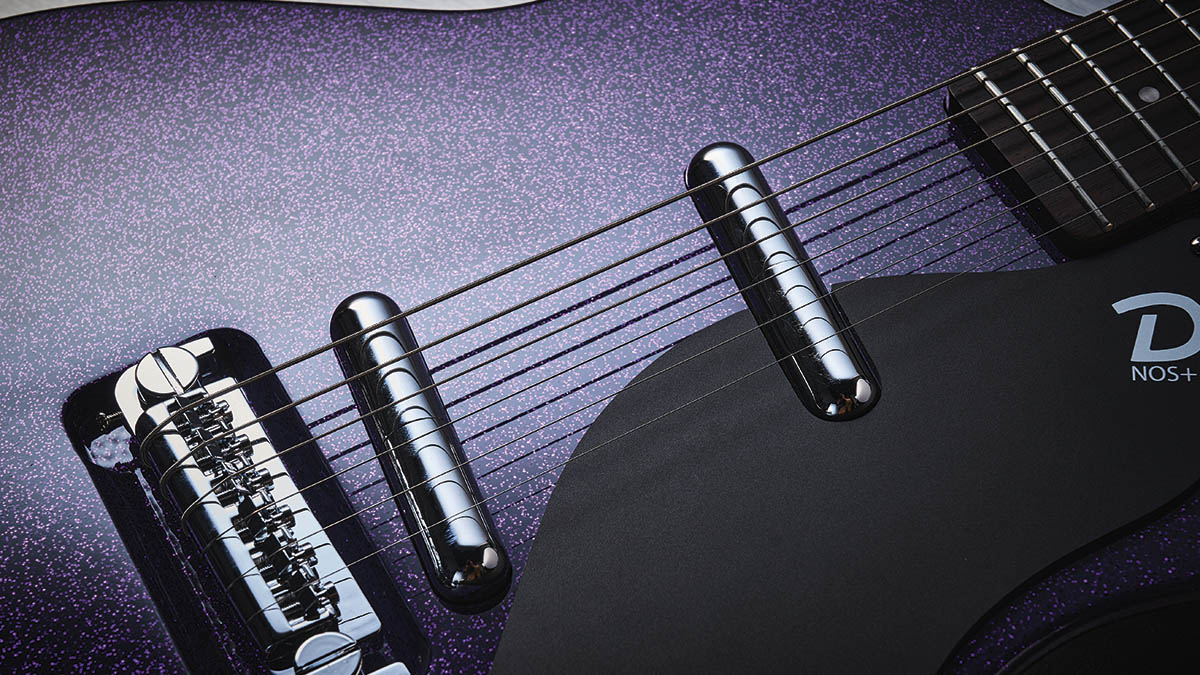Guitar World Verdict
The ‘Jimmy Page model’ gets a refresh and proves every bit as relevant today as it ever was, and sounds classically Dano, and that middle position with both pickups in series gives you a seriously fun tone to work with.
Pros
- +
Tidy, refreshed version of 64-year old design.
- +
Very well set up and in tune.
- +
The sound of both pickups on series seals the deal.
Cons
- -
Without modding, those stacked controls don’t work independently.
You can trust Guitar World
We last caught up with Danelectro back in 2020 with a pair of typically funky six-strings: the ‘shorthorn’ ’59 Divine and the single-cut ’57. Residing at the upper end of Dano price brackets, neither had that ‘impulse buy’ appeal that many readers will remember of the original reissues.
To be fair, though, the so-called Stock ’59, which is based on the original 1959 3021, kicks off the current range at more wallet-pleasing $459/£549 and features the classic two-pickup double-cut body with a long seal-shaped scratchplate, original-style wooden saddle, and four-way adjustable bridge.
Now, while the ’59M NOS ($529/£619) – what most of us would call the ‘Jimmy Page model’, with its modded Badass adjustable wrapover bridge – is still available in the UK, it has been superseded by the ’59 NOS+ (at the same price) with NOS+ lipstick tube pickups.
“[It’s] based on a pickup we designed in 1998/’99,” Danelectro told us. “Around 2009 or so we discovered a bunch of these pickups in a warehouse in Korea. They were so popular, we soon ran out. We then engineered a new pickup close to the NOS ones, and named it the NOS+.”


The latest additions are these ‘Blackout’ versions with black vinyl‑taped sides and a trio of colours: Purple Metalflake (as here), Black Metalflake and Green Envy.
The guitar is lightweight, with a Fender-width, thin-depthed neck and low frets. Thanks to a long body heel that extends to the 14th fret (plus Dano puts the strap button at its end), the potential for easy high-fret access of the famous double-cut body is diminished.

Our sample came with a slinky, in-tune setup and actually has a slightly hotter, brasher sound than a ’59 Divine we’d borrowed for reference. The stacked concentric volume/tone controls feel a bit cheap and it’s hard to move the lower, larger volume without also moving the smaller cream-topped tone control.
All the latest guitar news, interviews, lessons, reviews, deals and more, direct to your inbox!
The switch, of course, gives us each pickup independently – the bridge is thin and bright, the almost mid-placed neck pickup a little fuller – but in the both-on centre position we get a series link, which is where the action lies. It’s an altogether bigger, beefier widescreen sound.
We added a couple of small washers under the top knob of each stack, which means the volume and tones can move independently, and with a bit of classic gain there is plenty of potential to subtly blend the gritty voice. Nothing quite sounds like a Dano, and this one sounds a treat.
Specs

- PRICE: $529/£619
- ORIGIN: South Korea
- TYPE: Double-cutaway semi-solid electric
- BODY: Pine core with MDF top and backplates
- NECK: Maple, ‘C’ profile, bolt-on
- SCALE LENGTH: 635mm (25”)
- NUT/WIDTH: Aluminium/42.2mm
- FINGERBOARD: Rosewood, cream dot inlays, 356mm (14”) radius
- FRETS: 21, medium
- HARDWARE: Badass-style adjustable wrapover bridge (recessed into the body), unbranded Kluson-style tuners – nickel/chrome-plating
- STRING SPACING, BRIDGE: 52.5mm
- ELECTRICS: 2x Danelectro NOS+ single coils, 3-way toggle pickup selector, stacked volume/tone controls for each pickup
- WEIGHT (kg/lb): 2.89/6.36
- OPTIONS: No
- RANGE OPTIONS: Dano Shorthorns start with the Stock ’59 , in 5 colours (£549)
- LEFT-HANDERS: A lefty 59M NOS+ is listed on the USA website
- FINISH: Purple Metalflake (as reviewed), Black Metalflake and Green Envy – all gloss poly with black vinyl taped sides
- CONTACT: Danelectro

Dave Burrluck is one of the world’s most experienced guitar journalists, who started writing back in the '80s for International Musician and Recording World, co-founded The Guitar Magazine and has been the Gear Reviews Editor of Guitarist magazine for the past two decades. Along the way, Dave has been the sole author of The PRS Guitar Book and The Player's Guide to Guitar Maintenance as well as contributing to numerous other books on the electric guitar. Dave is an active gigging and recording musician and still finds time to make, repair and mod guitars, not least for Guitarist’s The Mod Squad.

